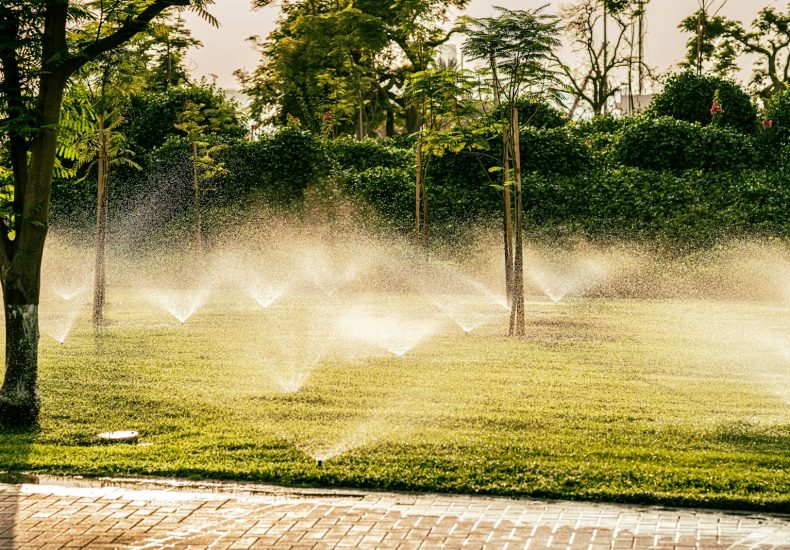
How to Design and Install a Homemade Automatic Irrigation System
“`html
This guide walks you through every stage of creating a DIY automatic irrigation system—from planning the layout to wiring the controller and testing the final setup. You’ll learn the essential tools, step‑by‑step instructions, common pitfalls, and advanced tricks to make your garden water itself efficiently and affordably.
How to Design and Install a Homemade Automatic Irrigation System – Complete Guide 2025
Whether you’re a hobby gardener, a small‑scale farmer, or a homeowner looking to save water and time, an automatic irrigation system can transform the way you care for plants. In this step‑by‑step tutorial, you’ll discover how to design and install a homemade automatic irrigation system that works reliably, costs a fraction of commercial kits, and can be customized to any garden size.
By the end of this guide you will be able to:
- Map out an efficient watering layout based on plant needs.
- Select the right components (valves, controllers, sensors, tubing).
- Wire and program a simple micro‑controller or timer.
- Test, troubleshoot, and fine‑tune the system for optimal performance.
The tutorial is organized into clear sections, each with actionable steps, tips, and troubleshooting notes, so you can follow along at your own pace. Let’s get started and give your garden the smart watering it deserves!
Quick Overview
| Aspect | Details |
|---|---|
| Prerequisites | Basic DIY skills, a garden plot (≥ 100 sq ft), access to electricity or solar power. |
| Time Required | Planning: 2‑3 hours | Installation: 6‑10 hours | Testing & tweaks: 1‑2 hours. |
| Skill Level | Beginner to intermediate (no soldering required for most kits). |
| Tools & Materials | PVC/PE tubing, drip emitters, solenoid valves, timer/controller, pressure regulator, pipe cutter, zip ties, T‑eflon tape, multimeter. |
| What You’ll Learn | System design, water‑flow calculations, wiring, programming, troubleshooting. |
What Is a Homemade Automatic Irrigation System?
An automatic irrigation system is a network of pipes, valves, and a controller that delivers water to plants on a preset schedule or based on soil moisture data. When built at home, the system uses off‑the‑shelf components (often from hardware stores) and a simple programmable timer or micro‑controller to automate the process.
The primary purpose is to provide consistent, measured watering while reducing manual labor and water waste. Unlike a basic hose‑on‑demand setup, an automatic system can:
- Adjust flow rates for different plant zones.
- Pause watering during rain (using rain sensors).
- Deliver water at optimal times of day (early morning or late evening).
Common misconceptions include the belief that a DIY system must be complex or expensive. In reality, a functional system can be built for under $150, and the core concepts are simple enough for anyone with basic DIY confidence.
Why It’s Important or Useful
Water is one of the most valuable resources for any garden. An automatic irrigation system helps you:
- Conserve water: Precise delivery reduces runoff and over‑watering.
- Save time: No more daily trips to the tap or hose.
- Boost plant health: Consistent moisture levels improve yields and reduce stress.
- Lower utility bills: Efficient watering can cut water usage by 30‑50%.
Take the story of Maya, a suburban homeowner who installed a DIY system in 2022. She reported a 40% reduction in her water bill and a 20% increase in vegetable yield after just one growing season.
Tools, Resources, and Requirements
Below is a comprehensive list of everything you’ll need. Links are illustrative; you can source alternatives that fit your budget.
- Micro‑controller or timer: Raspberry Pi Zero W (for advanced users) or Orbit 62061 6‑Station Wi‑Fi Timer (beginner).
- Solenoid valves (12 V or 120 V): Orbit 12 V 1.5 GPM valve.
- Drip tubing (½‑inch PE): 100‑ft roll, UV‑resistant.
- Emitters: 1‑gallon‑per‑hour (GPH) drip emitters for most vegetables; adjustable emitters for shrubs.
- Pressure regulator: Reduces municipal pressure to 25‑30 psi for drip lines.
- Backflow preventer: Prevents contamination of the water supply.
- Tools: Pipe cutter, screwdriver set, pliers, T‑eflon tape, zip ties, hose clamps, multimeter (for voltage checks).
- Optional sensors: Soil moisture sensor (capacitive), rain sensor, flow meter.
Skill level note: No soldering is required if you use push‑fit connectors; basic electrical safety knowledge is enough for wiring the controller.
Step‑By‑Step Guide
Step 1 – Assess Your Garden and Define Zones
Start by drawing a simple sketch of your garden on graph paper (1 ft = 1 square). Identify groups of plants with similar water needs (e.g., tomatoes, herbs, lawn). Each group becomes a “zone”.
- Measure the total square footage of each zone.
- Note sun exposure, soil type, and slope—these affect watering frequency.
Tip: Keep the number of zones manageable (3‑5) for a beginner system.
Step 2 – Calculate Water Flow Requirements
Determine how much water each zone needs per hour. A good rule of thumb is 1 gallon per square foot per week for vegetable gardens.
- Multiply zone area (sq ft) by 1 gallon.
- Divide by the number of watering days (usually 2‑3 per week).
- Result = gallons per watering session.
Convert gallons to flow rate: 1 gallon per minute ≈ 0.13 GPM. Choose a valve that can handle the highest zone flow.
Step 3 – Choose and Purchase Components
Based on your calculations, select:
- Valve size (e.g., 2 GPM for up to 15 sq ft zones).
- Emitter flow rates (0.5‑2 GPH depending on plant type).
- Controller type (timer vs. micro‑controller).
Buy a little extra tubing and a few spare emitters—mistakes happen!
Step 4 – Lay Out the Main Supply Line
Install a backflow preventer on the outdoor faucet, then attach a pressure regulator** to reduce pressure to 25‑30 psi. Connect the main PVC or polyethylene line (½‑inch) to the regulator using push‑fit fittings.
- Run the main line along the garden’s perimeter, securing it with stakes.
- Plan branch points where each zone will tap off.
Note: Keep the main line as short as possible to minimize pressure loss.
Step 5 – Install Solenoid Valves for Each Zone
At each branch point, install a solenoid valve. Connect the valve’s inlet to the main line and its outlet to the zone’s drip tubing.
- Use T‑eflon tape on threaded connections to prevent leaks.
- Label each valve (Zone 1, Zone 2, …) for easier programming.
Mount the valves on a waterproof box or directly on a post for easy access.
Step 6 – Run Drip Tubing and Place Emitters
From each valve, run ½‑inch drip tubing to the plants. Use “C” or “T” connectors to split lines where needed.
- Space emitters 12‑18 inches apart for row crops; closer for dense shrubs.
- Secure tubing with zip ties or staples, but avoid crushing it.
- Install a pressure regulator at the start of each zone if you notice uneven flow.
Step 7 – Wire the Controller or Timer
If you’re using a simple mechanical timer:
- Plug the timer into an outdoor‑rated GFCI outlet.
- Connect each valve’s power leads to the timer’s output channels (usually labeled “A‑B‑C”).
- Set the timer’s start time, duration, and days of the week.
For a micro‑controller (e.g., Raspberry Pi):
- Wire a 12 V power supply to a relay board (one relay per valve).
- Connect the relay’s NO (normally open) contacts to each valve’s power wires.
- Program the Pi using Python and the
GPIOlibrary to open/close relays on schedule.
Safety tip: Always use a waterproof enclosure and double



